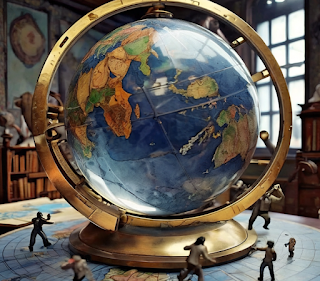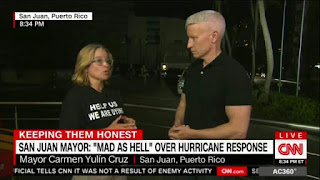Much has been said about the politicization of the personal. Politics is no longer about Washington D.C. It's about the movies you watch, the brands you buy, who your friends are and where you live. Everything from your choice of shoes to the car you drive is political. And if it isn't political to you, it is very political to the college student next door or the political activist running for city council. But the politicization of the personal is the flip side of the personalization of the political. The intrusion of politics into the pettiest and most personal aspects of human life is a manifestation of the same trend that has personalized politics so thoroughly that even the biggest issues are reduced to the pettiest common denominators of personal animosity. The personal is political because the political is personal. Millennials and their younger siblings lead the trend. Their politics is so personal that it doesn't exist apart from their emotions. When campus lef...
Search Blog
Hit enter to search or ESC to close
Showing posts from October, 2017
Posts
- Get link
- X
- Other Apps
The Global Failure of Globalization
“We cannot allow to fall back into pre-globalization times,” German Chancellor Angela Merkel warned. Merkel was welcoming Obama back to Berlin for the last time. The election had been fought and won nine days earlier. And Obama and Merkel were defending globalism against President-elect Trump. To Merkel and Obama, returning to pre-globalization times was every bit as mad as going back to the caves. Globalization had become synonymous with civilization. And its prophets, like Thomas Friedman, traced back its rise to the fall of the Berlin Wall in the city where Merkel and Obama were chatting. But globalization didn’t bring down the Berlin Wall. Nationalism did. The pro-democracy activists wanted a country where the people had a voice. That’s the opposite of globalization in which there are no nations and only the influential figures of various stripes have any kind of impact. Globalization built the Berlin Wall to unite East Germany with a Communist bloc built around a set of po...
- Get link
- X
- Other Apps
Europe's Next World War Begins in France
Interior Minister Gerard Collomb made it official. France is "in a state of war”. It’s not just rhetoric. Bombs turn up in a posh Parisian suburb. Two young women are butchered at a train station. And it’s just another week of an Islamic World War III being fought in France. From the November attacks in 2015 that killed 130 people and wounded another 400+, to the Bastille Day truck ramming attack last year that killed 86 and wounded 458, the war is real. French casualties in France are worse than in Afghanistan. The French lost 70 people to Islamic terrorist attacks in Afghanistan. And 239 to Islamic terrorist attacks in France. The French losses in Afghanistan were suffered in over a decade of deployment in one of the most dangerous Islamic areas in the world. The French losses in France were suffered in less than two years. There’s something very wrong when Afghanistan is safer than Paris. 10,000 French soldiers were deployed in the streets of their own country in O...
- Get link
- X
- Other Apps
The Puerto Rican Genocide That Wasn't
The Mayor of San Juan recently took a break from her tour of every cable news network on the planet to text an accusation of genocide aimed at President Trump. "WE WILL NOT BE LEFT TO DIE,” Mayor Carmen Yulin Cruz texted. “I ask the United Nations, UNICEF and the world to stand with the people of Puerto Rico and stop the genocide.” The death toll in Puerto Rico currently stands at 48. Hurricane Maria made landfall in Puerto Rico on September 20. As we approach October 20, the death toll from the hurricane is a lot less than the death toll from the deadliest month in Chicago. Despite media arm waving, with only 117 people not accounted for, the actual death toll in Puerto Rico isn’t likely to rise very much. And even a death toll of 48 was only achieved by listing people who died of heart attacks and other medical problems that could not be treated because of hurricane damage. It’s unknown whether some of them might have lived without the hurricane. It’s guesswork. The pr...
- Get link
- X
- Other Apps
Harvey Weinstein's Victims Were Collateral Damage in the Left's Culture War
In the spring of his final year as a movie mogul, Harvey Weinstein was doing what he always did. Or rather what he always did in public view: as opposed to what he has been accused of doing in hotel rooms and deserted office storage rooms. He was fighting a ratings war over a movie with adult content. The movie was 3 Generations. It had been made two years earlier to cash in on the transgender boom. Back then it was called About Ray. But the reviews were bad and the movie was pulled a few days before it was supposed to be released. What do you do with a bad politically correct movie that you paid $6 million for? You start a culture war. And that’s exactly what Harvey Weinstein did. He enlisted GLAAD, the gay rights group, to lobby for a PG-13 rating for the newly renamed movie. "The Weinstein Company dared to tell culture-changing LGBTQ stories that Hollywood too often shies away from,” GLAAD president Sarah Kate Ellis shilled. It didn’t hurt that Harvey was a donor to GL...
- Get link
- X
- Other Apps
The Culture War of Gun Control
After Vegas, the gun control memes and myths come out. It doesn't matter how wrong they are, they will echo in the mediasphere and then the talking points will leak into everyday conversations. “Guns are uniquely lethal.” Last year, a Muslim terrorist with a truck killed 86 people and wounded another 458. Mohamed Lahouaiej-Bouhlel, the Tunisian Muslim killer, had brought along a gun, but it proved largely ineffective. The deadliest weapon of the delivery driver was a truck. Mohammed, who was no genius, used it to kill more people than Stephen Paddock would with all his meticulous planning in Vegas. Do we need truck control? Deadlier than the truck is the jet plane. Nearly 3,000 people were killed on September 11 by terrorists with a plan and some box cutters. And then there are always the bombs. The Boston Marathon bomber wounded 264, a suicide bomber at the Manchester Arena last year wounded 250 and the Oklahoma City Bombing (the only non-Islamic terror attack on the ...
- Get link
- X
- Other Apps
The Center for Jewish History's Jewish Problem
The Jewish community was shocked when it learned that David N. Myers, a militant anti-Israel activist, had been quietly put into place as the head of the Center for Jewish History. There was even more shock at the unquestioning support that Myers received from establishment figures at the Center and its constituent organizations like the American Jewish Historical Society. There is a very good reason for that. David N. Myers did not end up in his position by accident. The defenses of his anti-Israel activism contend that we should ignore his political views because they have nothing to do with his position. But it’s because of these views that he got the job and because of them that he will keep the job. Myers’ appointment was not the beginning of a problem at the Center for Jewish History. It’s just the most obvious symptom of a serious ongoing anti-Jewish crisis in Jewish Studies. Let’s start with an organization misleadingly named Scholars for Israel and Palestine whic...
- Get link
- X
- Other Apps






